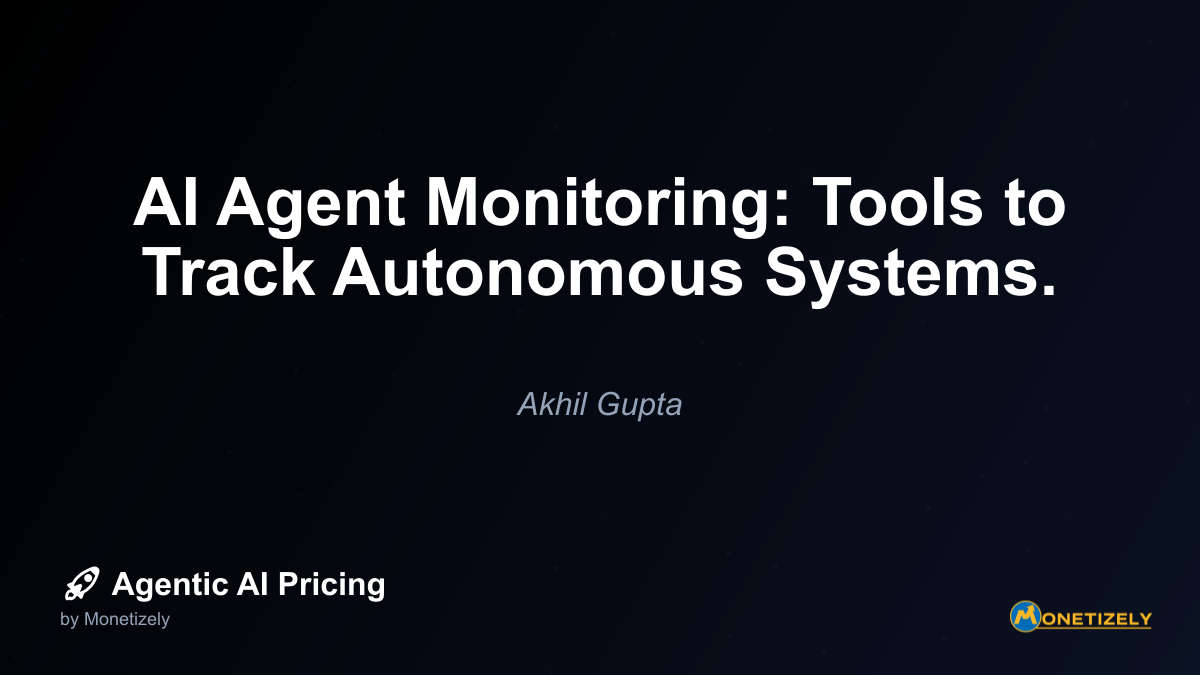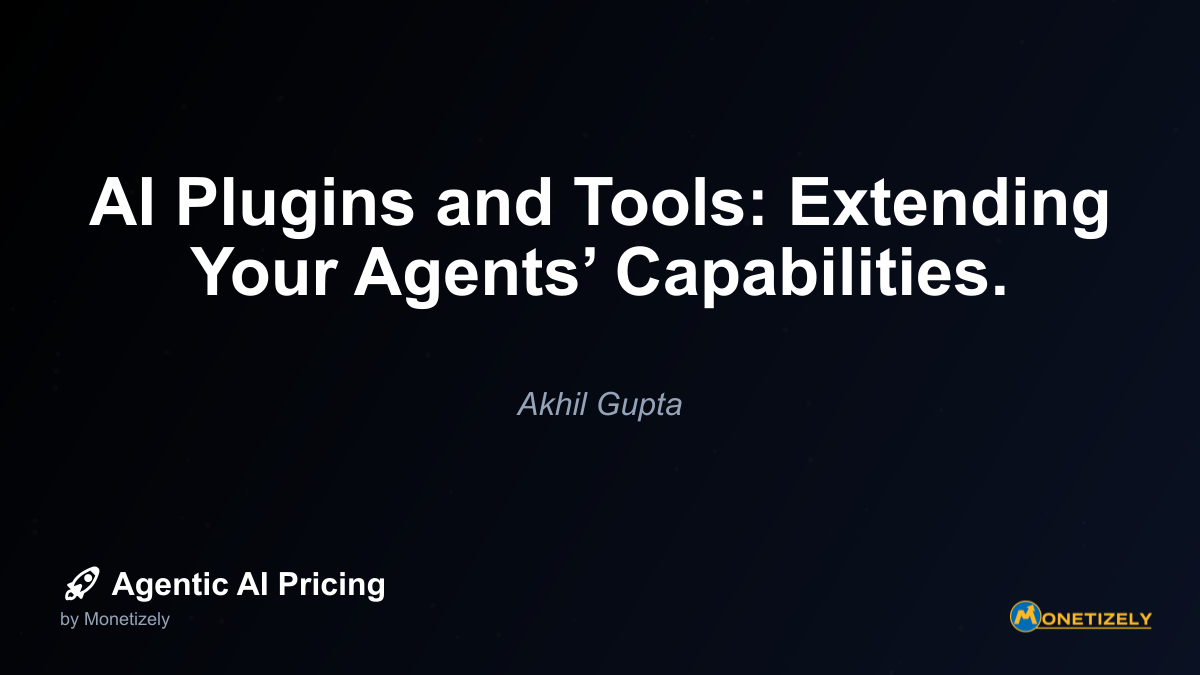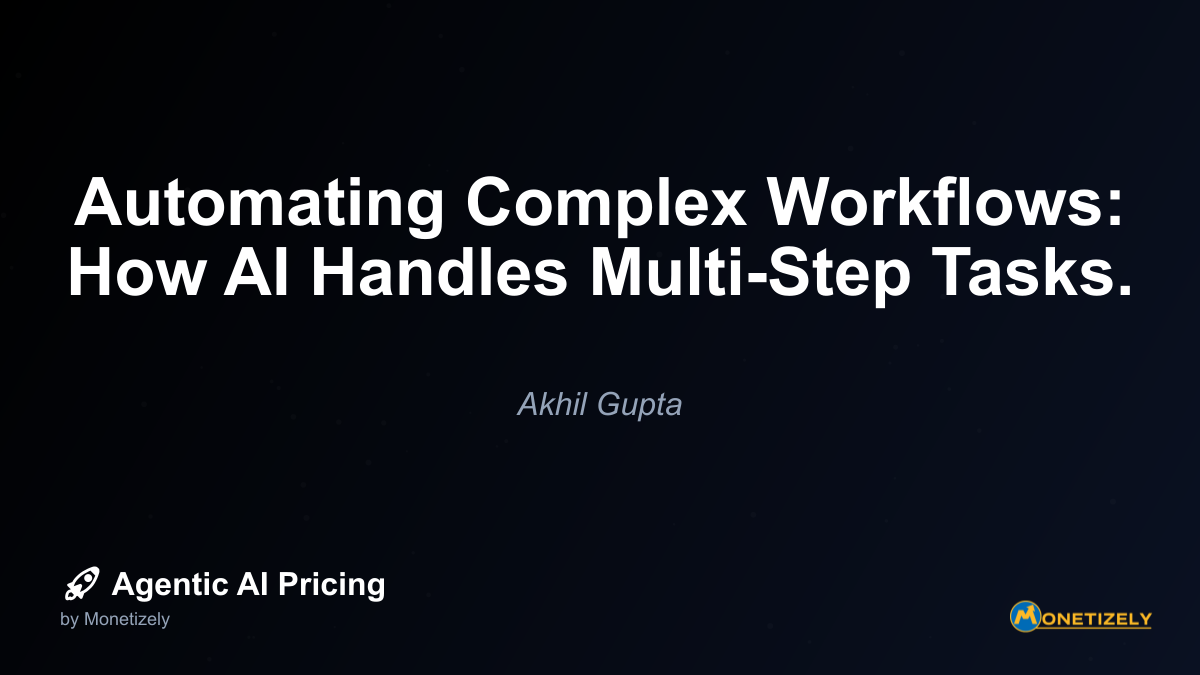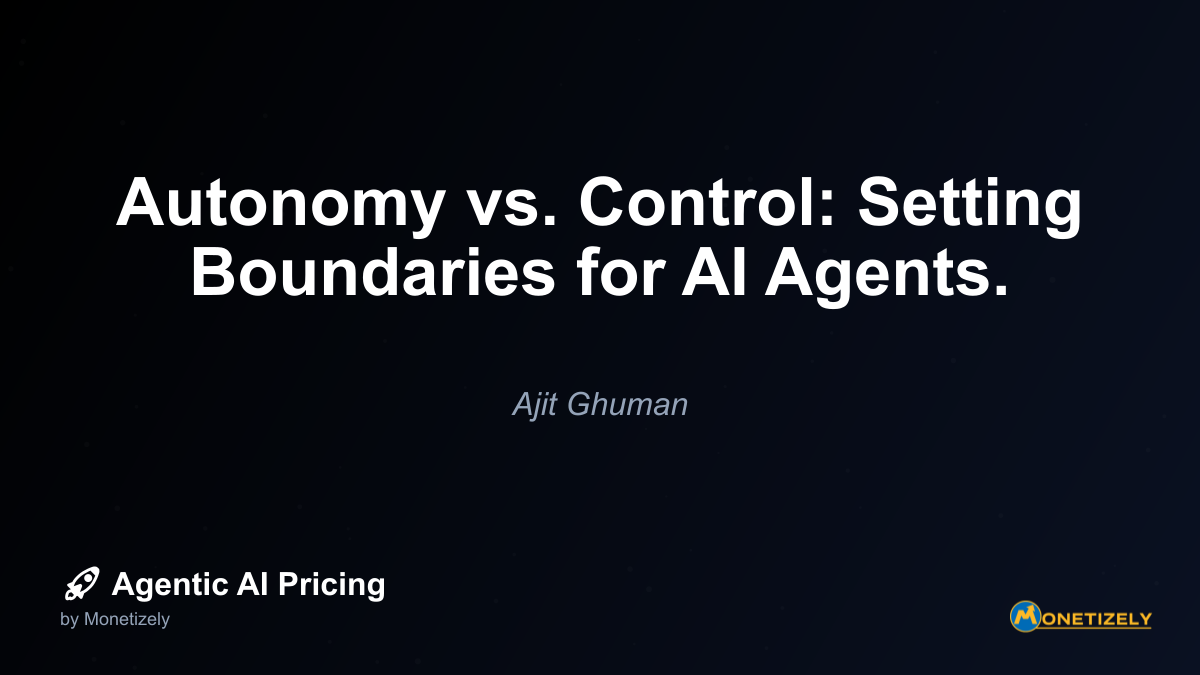· Ajit Ghuman · Technical Insights · 6 min read
Continuous Learning: Should Your AI Improve Over Time?
AI and SaaS Pricing Masterclass
Learn the art of strategic pricing directly from industry experts. Our comprehensive course provides frameworks and methodologies for optimizing your pricing strategy in the evolving AI landscape. Earn a professional certification that can be imported directly to your LinkedIn profile.
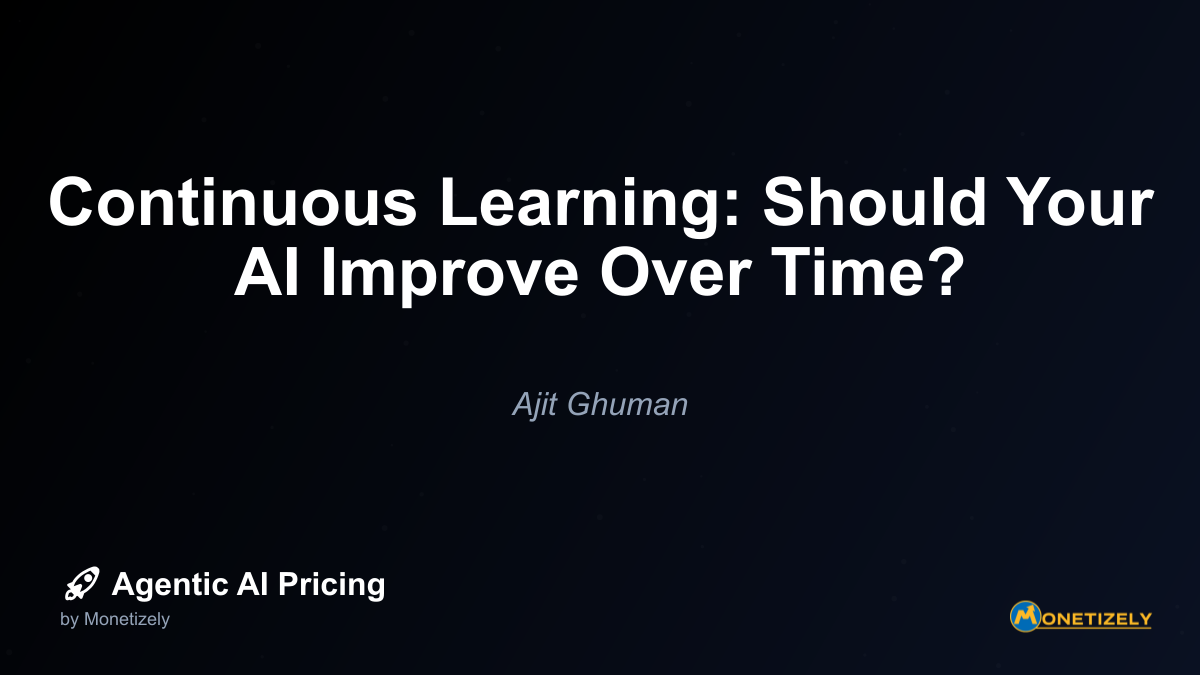
Pricing Models for Continuously Learning AI Systems
The decision to implement continuous learning capabilities significantly impacts how AI systems should be priced. Organizations must develop pricing structures that reflect both the increased value of adaptive systems and the additional costs of maintaining them.
Tiered Subscription Models Based on Learning Capabilities
One effective approach is to structure subscription tiers around different levels of continuous learning capabilities:
- Static Tier: Base-level pricing for models that remain unchanged after deployment
- Periodic Update Tier: Mid-level pricing for systems that receive scheduled retraining with new data
- Continuous Adaptation Tier: Premium pricing for systems that learn and adapt in real-time
This tiered approach allows customers to select the appropriate level of adaptability for their needs and budget while providing clear value differentiation.
Usage-Based Components
Many organizations implement hybrid pricing models that combine subscription fees with usage-based components specifically tied to learning activities:
- Base subscription for core functionality
- Per-instance charges for model updates or retraining events
- Compute-time billing for continuous learning processes
- Data storage fees for maintaining historical information needed for learning
Research on continual learning pricing models shows that properly structured usage components can align costs with value creation, ensuring profitability while delivering customer value.
Performance-Based Pricing Elements
For some applications, particularly in enterprise settings, performance-based pricing elements can effectively capture the value of continuous learning:
- Improvement bonuses when the system exceeds baseline performance metrics
- Outcome-based fees tied to specific business results
- Value-sharing arrangements where providers receive a percentage of documented savings or revenue increases
These models align incentives between provider and customer while creating a direct financial link between continuous learning and business impact.
Cost Management Considerations
Organizations implementing continuous learning must carefully manage several cost factors:
- Compute resources required for ongoing learning processes
- Data storage for training examples and model versions
- Human oversight and governance costs
- Quality assurance and testing for evolved models
- Potential remediation costs for addressing problematic adaptations
These costs must be reflected in pricing models to ensure sustainable delivery of continuous learning capabilities.
Implementation Strategies: Static vs. Continuous Learning
Organizations must make strategic choices about when and how to implement continuous learning capabilities in their AI agents. Several approaches offer different balances between adaptability and control.
The Hybrid Approach: Core Stability with Adaptive Extensions
Many organizations find success with a hybrid model that maintains a stable core while allowing controlled adaptation in specific areas:
Preserve Core Functionality: Keep fundamental capabilities and safety guardrails static to ensure consistent baseline performance.
Enable Targeted Learning: Allow adaptation in specific domains where environmental change is rapid and the risks of drift are manageable.
Implement Tiered Governance: Apply different levels of oversight based on the sensitivity and impact of each adaptable component.
This approach balances the benefits of continuous learning with the need for reliability and predictability.
The Staged Rollout Strategy
Rather than immediately enabling continuous learning across all aspects of an AI system, a staged approach reduces risk while capturing benefits:
Begin with Monitoring Only: Deploy the system initially in a static configuration while collecting data that would inform future learning.
Introduce Periodic Updates: Implement scheduled retraining cycles with human review before moving to more dynamic learning.
Gradually Expand Learning Scope: Start with low-risk components before enabling adaptation in more sensitive areas.
Continuously Evaluate ROI: Measure the actual business impact of learning capabilities to justify further investment.
This measured approach allows organizations to build expertise in managing adaptive AI while minimizing risk exposure.
The Segmented User Approach
Another effective strategy involves offering different learning capabilities to different user segments:
Static Models for Risk-Averse Users: Provide unchanging systems to customers in highly regulated industries or with strict compliance requirements.
Opt-In Learning for Others: Allow customers to choose whether their instances will adapt over time, potentially at different price points.
Learning Sandboxes: Create controlled environments where adaptation can be tested before being deployed to production systems.
This approach recognizes that continuous learning needs vary across customer segments and use cases.
Measuring Success: KPIs for Continuous Learning
To evaluate whether continuous learning is delivering value, organizations should track specific key performance indicators:
Performance Metrics
- Accuracy Improvement Rate: The pace at which the system improves on core tasks over time
- Error Reduction: Decreases in mistake frequency or severity
- Adaptation Speed: How quickly the system responds to environmental changes
- Personalization Depth: Increasing relevance to specific users or segments
Risk Indicators
- Drift Magnitude: How significantly the system’s behavior changes over time
- Unexpected Behavior Frequency: Instances of novel, unintended actions
- Confidence Stability: Consistency in the system’s certainty levels
- Outlier Responses: Frequency of highly unusual outputs
Business Impact Measures
- Customer Satisfaction Trends: Changes in user sentiment over time
- Retention Impact: Differences in churn between adaptive and static systems
- Support Cost Reduction: Decreasing need for human intervention
- Revenue Per User: Changes in monetization effectiveness
Governance Effectiveness
- Review Efficiency: Time required to evaluate and approve adaptations
- Intervention Frequency: How often human oversight must correct the system
- Documentation Completeness: Thoroughness of adaptation records
- Recovery Time: Speed of rollback when problems occur
Regular evaluation of these metrics helps organizations determine whether continuous learning is creating sufficient value to justify its costs and risks.
Future Trends in Continuous Learning for AI Agents
As the field evolves, several emerging trends will shape how organizations approach continuous learning in AI systems:
Federated Learning Integration
Federated learning—where models learn from distributed data without centralizing it—will become increasingly important for continuous learning systems. This approach addresses privacy concerns while enabling adaptation based on diverse data sources.
Explainable Adaptation
New techniques are emerging to make continuous learning processes more transparent and understandable. These advances will help organizations maintain visibility into how and why their AI systems are changing over time.
Automated Governance
As continuous learning becomes more common, automated governance tools will evolve to monitor, validate, and document adaptations with less human intervention. These systems will apply predefined policies to ensure learning remains within acceptable boundaries.
Differential Privacy Frameworks
Enhanced privacy protection mechanisms will allow continuous learning from sensitive data while providing mathematical guarantees against information leakage. These frameworks will expand the contexts where adaptive learning can be safely deployed.
Specialized Learning Infrastructures
Purpose-built infrastructure for continuous learning—including specialized hardware, monitoring tools, and management platforms—will reduce implementation costs and technical barriers.
Organizations that stay ahead of these trends will be well-positioned to capture the benefits of continuous learning while managing its risks effectively.
Conclusion: Making the Right Choice for Your AI Strategy
The decision to implement continuous learning in AI systems involves balancing potential benefits against manageable risks. There is no universal answer—the right approach depends on your specific use case, risk tolerance, governance capabilities, and business objectives.
For organizations considering continuous learning capabilities, we recommend a thoughtful, staged approach:
Assess Value Potential: Identify specific areas where adaptation would create meaningful business impact.
Evaluate Risk Profile: Consider regulatory, reputation, and operational risks unique to your context.
Build Governance First: Establish monitoring, oversight, and rollback capabilities before enabling adaptation.
Start Conservatively: Begin with limited, controlled learning before expanding to more dynamic capabilities.
Measure Continuously: Track performance, risk, and business impact metrics to validate your approach.
Whether you choose static models, periodic retraining, or fully continuous learning, the key is making this decision deliberately rather than by default. Each approach offers different advantages, and the optimal strategy may involve different learning models for different components of your AI system.
By thoughtfully implementing the right continuous learning strategy for your context, you can maximize the long-term value of your AI investments while maintaining appropriate control over how these systems evolve and operate.
Co-Founder & CEO
Ajit is the author of Price To Scale, a top book on SaaS Pricing and is the Founder of Monetizely. Ajit has led and worked in pricing and product marketing at firms like Twilio, Narvar and Medallia. His work has been featured in Forbes and VentureBeat. Ajit regularly consults with software companies from Seed stage to post-IPO on pricing strategy. Ajit is also a highly-rated co-instructor for 'The Art of SaaS Pricing and Monetization' on Maven.
Pricing Strategy Audit
Let our experts analyze your current pricing strategy and identify opportunities for improvement. Our data-driven assessment will help you unlock untapped revenue potential and optimize your AI pricing approach.

